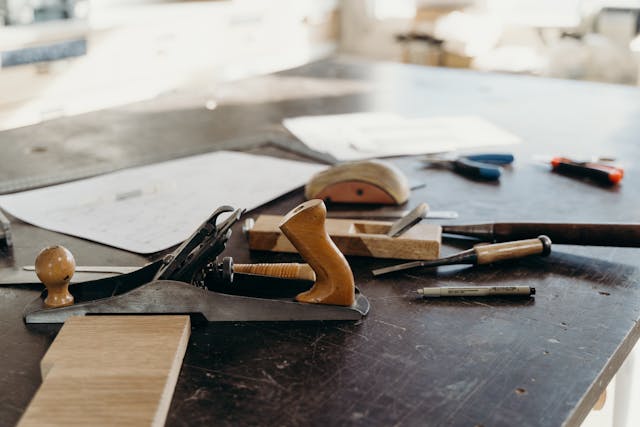A jointer is an essential tool for any woodworker aiming to achieve smooth, flat, and even surfaces. It is instrumental in preparing wood for furniture, cabinetry, and other projects that demand precision. This guide explores the uses of a jointer, its different types, and tips for maximizing its potential in woodworking.
Read about Nut Driver here!
What is a Jointer?
A jointer is a woodworking tool designed to flatten surfaces and create straight edges. It is often used in conjunction with other tools like planers to ensure perfectly aligned and leveled wood pieces.
Types of Jointers
There are various types of jointers to suit different woodworking needs.
Finger Jointer
A finger jointer creates interlocking joints by cutting evenly spaced fingers on the edges of wood pieces. It is widely used in constructing strong, durable joints for doors, panels, and frames.
Ball Jointer
A ball jointer is a specialized tool often used in mechanical or piping applications. In woodworking, it assists in creating flexible and adjustable joints.
Jointer Planer
The jointer planer is a dual-purpose tool that combines the functions of a jointer and a planer. It is ideal for flattening surfaces and achieving consistent thickness in one machine.
Popular Brands of Jointers
Choosing the right jointer brand can significantly impact your woodworking projects.
Jet Jointer
Jet jointers are known for their precision and durability. They offer smooth operation and are ideal for both beginners and professionals.
Powermatic Jointer
Powermatic jointers are a premium choice for woodworkers seeking high-quality performance and advanced features. They are built to handle heavy-duty tasks.
Using a Wood Jointer
Using a jointer requires careful setup and technique to ensure the best results.
Step 1: Prepare the Wood
Inspect the wood for nails, screws, or debris that could damage the jointer blade.
Step 2: Adjust the Fence and Blade
Set the jointer fence to the desired angle, typically 90 degrees for straight edges. Adjust the blade depth for optimal cutting efficiency.
Step 3: Feed the Wood
Place the wood flat against the fence and slowly feed it through the jointer. Use steady pressure and ensure consistent motion for even results.
Step 4: Check the Output
Inspect the wood for a smooth surface and straight edges. Repeat the process if necessary to achieve the desired result.
Benefits of a Jointer
A jointer offers several advantages for woodworking projects:
- Smooth Surfaces
Perfect for eliminating warps, bows, and twists in wood. - Straight Edges
Essential for creating seamless joints in furniture and cabinetry. - Versatility
Works with various wood types and dimensions. - Increased Efficiency
Speeds up the preparation process, saving time and effort.
Applications of a Jointer
A jointer is a versatile tool used for various tasks:
- Edge Jointing
Ensures straight edges for joining boards in tabletops, panels, or flooring. - Flattening Faces
Prepares warped or twisted wood for further processing. - Tapering
Creates angled edges for decorative or structural purposes. - Joining Multiple Pieces
Helps align and connect multiple boards seamlessly.
Tips for Maintaining a Jointer
To ensure your jointer remains in top condition, follow these maintenance tips:
- Keep the Blades Sharp
Dull blades can lead to uneven surfaces and tear-out. Regularly sharpen or replace the blades. - Clean the Table and Fence
Remove dust and debris to maintain smooth operation. - Lubricate Moving Parts
Use appropriate lubricants to prevent wear and ensure smooth motion. - Check the Belt and Motor
Inspect for signs of wear or damage and replace parts as needed.
Choosing the Right Jointer
When selecting a jointer, consider the following factors:
- Size
Choose a jointer that accommodates the dimensions of your typical projects. - Power
Opt for a motor with enough power to handle hardwoods and larger tasks. - Features
Look for adjustable fences, dust collection systems, and safety mechanisms. - Budget
Select a jointer that fits your budget while meeting your needs for performance and durability.
Why Invest in a Wood Jointer?
A wood jointer is an invaluable tool for achieving precision and quality in woodworking. It simplifies the process of preparing wood, enabling you to focus on creating beautiful and functional pieces. Whether you’re a hobbyist or a professional, a jointer enhances your capabilities and delivers exceptional results.
Conclusion
A jointer is a cornerstone of any woodworking setup, providing the precision and efficiency needed for flawless projects. With proper use and maintenance, it can transform your woodworking experience and elevate the quality of your creations.
